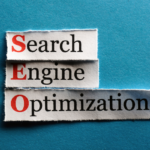Albert Einstein said, “If I had an hour to solve a problem, I’d spend 55 minutes thinking about the problem and 5 minutes thinking about solutions.” This is an incredibly relevant quote with relation to Google Analytics. Analytics and attribution is a very hot topic and yet it is so poorly understood. I believe that the resulting frustrations are due to the lack of a clear framework that can help define the problem. If someone were to ask “What is the single biggest mistake you see marketers and business owners make with regard to Google Analytics?” I would say working without purpose. Analytics is a data tool and the interpretation of that data is the art of being less wrong. Analytics will never be 100% accurate but we can be less wrong and use the data to make better decisions about our businesses.
I constantly see people dive into the deep end of data without asking questions. No questions means you’ll receive no impact from the data, which means you’re working without purpose. Broadly speaking, if you ask the right questions you should get an answer that proves or disproves a notion. Think of Google Analytics as the Who, What, When, Where, How and Why of your website. If you have set up Analytics correctly and you ask the right questions, the data will certainly guide you. In a later piece, we will talk more about where to find the answers to your questions. For this article we are going to focus on the foundation that most people overlook. Most people expect Analytics or any data for that matter, to give them magical answers about what’s working and not working before they’ve even figured out what questions to ask.
Before you can expect any data to answer your questions, I recommend that you take the time to answer five questions in a structured and insightful way. This will help you to understand the purpose of your digital existence and therefore understand how to set up your Analytics account and what questions you would like it to answer. These five questions will give you a great sense of your business that will bring the needed relevancy to any data analysis. (You should NOT open Analytics until you completely answer all five questions.)
Why does our website exist?
I understand that this may seem obvious at first, but the answer to this question is the Holy Grail. We want to identify as close to 100% of the purpose for why your site exists. (How it makes money, generates leads, raises donations, helps your current clients, etc.) So your first task is to identify what the “Macro Conversions” are. These are the single biggest reason for the site’s existence.
The next task is to identify the “Micro Conversions”. These are engagement points that a user may take that aren’t your No. 1 goal of acquiring a new client, but are engagements that are still important for you to measure. These can be actions such as someone ordering your catalog, joining your mailing list, visiting your social platforms, requesting a quote or even writing a review.
Now you have a fantastic understanding of your business objective and the goals (both macro and micro) to understand 100% of your site’s purpose and be able to measure its success.
What parts of the website should you focus on first?
One of the bigger problems we see with digital analytics is that we have way too much data to look at and we don’t really understand where to start.
It’s important to figure out where to focus your analysis. To do this, we recommend answering these questions:
• What content on my site is directly tied to driving Macro and Micro Conversions?
• What sections of my site are most valuable and useful to my visitors?
• What content on my site is expensive to create? (Hence important for us to measure to see what value it’s adding at what cost)
• What do the navigation groupings tell you about your priorities, and are they aligned correctly with the reasons your site exists?
• What possible cross-sells or up-sells are you using across the site?
These simple questions will quickly help you to understand what data might be useful to dig into.
Bonus Tip: In answering these questions, don’t overlook sections like your resources or tools where visitor “learning” may be involved. The more your visitors are aware, the more likely they are to become clients.
What is your current digital marketing strategy?
This is all about acquisition. Make a list of all of your current marketing initiatives, whether they are digital or not. These include things like Google Adwords, Display ads, remarketing, email campaigns, Facebook ads, Yelp ads, radio, TV and print. All of this goes into creating starting points or baselines for what I’ll look at and measure when I dig into Analytics.
How well are you doing in context of your competition?
It’s a grave mistake to dive into any analysis of your website’s data without first getting a little context about your competitive performance. What is your competition doing? Where are you showing up together? Where are they showing up that you are not? The purpose of competitive intelligence analysis is to understand your place in the world, to highlight from an industry/ecosystem perspective what your strengths and areas of opportunity are.
What is the fastest way I can have an impact on the business?
Look for low hanging fruit to fix or analyze — something you can do quickly, find insights for and fix to see the value of the data. Here are some examples of things we consciously look for:
• Any broken (404 errors) or misdirected links?
• Any poorly constructed landing pages?
• Anything important missing from the website that is crucial to why you exist?
• Any missed opportunities in promoting any of your Macro or Micro conversions?
Depending on your website and your goals, you may find other things to fix. But at this stage, you’re simply looking for items that can be fixed quickly and for which the impact can be quickly measured. These are quick, BIG wins. They serve as confidence builders for us in the value of Analytics. Try to find something with a clear purpose to show the power of actions taken through data. One of my favorites for ecommerce sites is to identify and improve the checkout abandonment rate. This is where you have problems in your checkout process that cause people to leave before they finish their purchase.
This is directly tied to business purpose. It is absolutely focused on something important (obtaining the Macro conversion). It is small, very well defined and easily measurable. That’s how Analytics helps us achieve glory — through data, powered by a clear purpose.
So, five simple questions will help you focus on the end-to-end view of the business and your goals without ever touching the data, while helping you create your own measurement model. With this information, you will be able to ask the right questions and let Analytics data provide you with the actionable answers to help you grow your business.
Rather than letting the data take you somewhere randomly, let this approach put you in the driver’s seat and let you take the data for a ride to a specific destination.





 8055 E. Tufts Ave. Suite 240
8055 E. Tufts Ave. Suite 240




